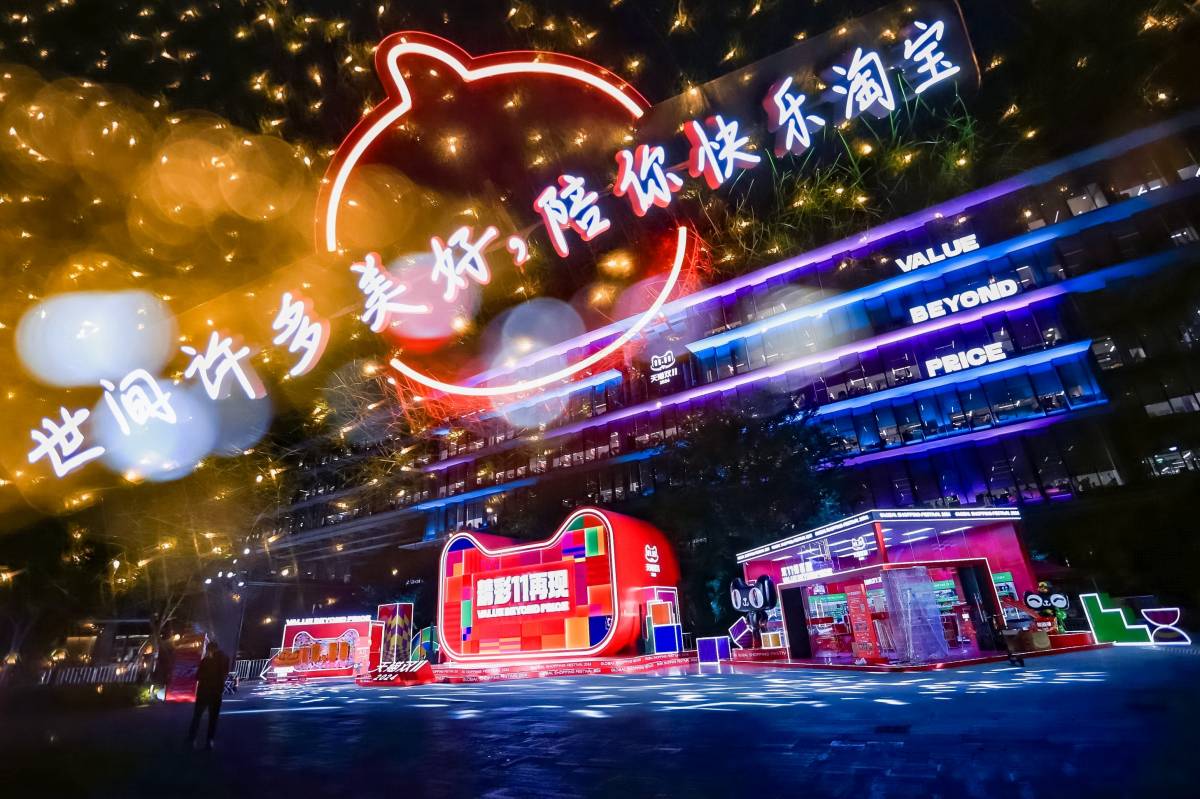
Diane von Furstenberg and her granddaughter Talita Von Furstenberg (left) with DVF President and CEO Gabby HIrata (right). Photo credit: Alibaba Group
Retailers are taking to the airwaves and livestreaming product sales themselves in China, lessening their reliance on a cadre of online influencers of consumer behavior.
DVF, Helena Rubinstein and Swiss watchmaker Vacheron Constantine are among the global brands ramping up their own livestreaming channels to build a following, share niche products and shape consumer opinion.
“Livestreaming allows me to speak, not just to one person, but to 18,000,” said DVF founder Diane von Furstenberg.
Brand-run streaming accounts are overtaking influencers as the biggest generators of gross merchandise value (GMV) for some e-commerce platforms. Retailers generated 60% of GMV on Alibaba Group’s consumer-to-consumer livestreaming e-commerce platform Taobao Live in the 12 months ending Sept. 30, last year.
Key opinion leaders (KOLs), such as Lipstick King Austin Li and Lie’er Baby, dominated China’s livestreaming industry from around 2016 to 2020 as they charmed viewers into buying products from brands that bought airtime.
But as the pandemic pounded in-store shopping worldwide, brands in China woke up to the potential of livestreaming.
L’Oreal-owned Helena Rubinstein, one of the first to partner with KOLs on livestreams in 2019, launched its own channel after videos headlined by its staff netted roughly 10% of sales during 11.11, China’s largest shopping festival, in 2020.
“That experience led us to believe brand-led livestreaming could be a huge opportunity for our e-commerce business,” said Austin Li, head of livestreaming in China at luxury skincare brand Helena Rubinstein (no relation to the Lipstick King).
KOLs contributed about 40% of the beauty brand’s e-commerce business GMV in China. Still, during the last 11.11, the brand started to do part of the livestreaming itself, reducing KOLs’ share to around 30%, said Li.
The phenomenon is spreading. More than 100,000 brands hosted livestreams on Alibaba’s streaming platform Taobao Live during last year’s 11.11. Among these, 43 brands had their live stream-initiated GMV exceed RMB100 million ($15.8 million).
To be sure, brands are not eclipsing KOLs entirely, nor do they want to. Many brands see these social media gurus as an extension of their marketing and employ a phalanx of grassroots KOLs to spread the word far and wide.
“KOLs can bring much traffic to brands. For example, if a product is featured in Austin Li’s livestreams, brands will immediately see a huge jump in viewership in their own livestream,” said Jenna Zou, head of live streaming for beauty merchants on Alibaba B2C e-commerce platform Tmall.
That said, brand livestreaming is gaining traction as companies exert greater control over their image. While streaming for themselves, brands build up personal connections with their viewers and amass a loyal following, according to Li.

Audience Building
With in-person shopping on the out, livestreaming is now the most intimate way for brands to interact with their existing customers — and bring new ones into the fold.
U.S.-based luxury fashion brand DVF started to make regular livestreams on its Tmall flagship store after the business took a hit during the pandemic.
“We wouldn’t be able to talk [with our Chinese customers] otherwise because we can’t visit and we can’t host anything,” Talita von Furstenberg, the brand’s co-chairwoman and designer, said at a Mar. 4 event celebrating International Women’s Day.
The brand increased livestreaming from once a month in February 2020 to four sessions a month last year. During these livestreams, DVF employees received hundreds of comments from viewers, ranging from questions about dress design to conversations about what sets a DVF consumer apart.
“When you’re just scrolling on our website, you don’t get that,” explained Von Furstenberg, who is also the granddaughter of Diane von Furstenberg.
During DVF’s livestream on March 4, Chinese consumers were transported to the brand’s flagship store in New York to interact directly with both women as well as DVF CEO and livestreaming veteran Gabby Hirata.
In the long term, investing in consumer education and building a following pays off. Viewers of brand-led livestreams are up to four times more likely to purchase goods, according to Tmall data, compared with users just browsing a brand’s store on the platform.
Like subscription models, livestream viewers are encouraged to become members of these stores, giving the platform an avenue to reach consumers and analyze purchasing behavior.
In the process, they are more likely to become repeat buyers, according to Zou, boosting conversion rates further.
Strengthening Brand Image
Beyond audience and sales growth, developing livestreaming talent and resources in-house helps brands protect and cultivate their image.
This is an essential consideration for brands expanding in overseas markets, as they toe the line between localization and retaining core messaging.
“As a luxury brand, we believe having too much exposure through KOLs will dilute our brand image and lead consumers to see our brand as promotion-driven,” said Helena Rubinstein’s Li.
Helena Rubinstein’s white-coated sales associates-turned-livestreamers exude elegance with their pearl jewelry and glowing complexions, even as they spend up to 10 or 12 hours every day instructing viewers about product ingredients, skincare routines and upcoming promotions.
“We believe these details tell a story to consumers and convey luxury,” he added. Medical professionals sometimes join in, adding credibility to the brand’s claims of selling cutting-edge skincare solutions.
Some brands head in another direction. DVF takes a different approach, with their livestreams hosted by models and designers sporting the brand’s iconic wrap dresses in vivid prints — the brighter, the better.
“It sounds crazy, but wear something super colorful and you immediately feel more confident,” the younger von Furstenberg explained.
“We want all our customers [to feel like this] and we can make that clear through livestreaming […] so they really know what they’re getting.”
Something For Everyone
From hero products to lesser-known offerings, self-run livestreams give brands a platform to shine a spotlight across their entire inventory.
By trial and error, Helena Rubinstein discovered that regular viewers are more likely to try more expensive and obscure offerings during brand-led livestreams as they get the opportunity to learn about these products.
“We tried promoting new products and high-price serums on KOL-led streams, but that didn’t work very well,” said Li. He attributes this to the fast-paced, discount-oriented content favored by Chinese influencers.
As platforms such as Alibaba develop livestream e-commerce into a deeply embedded habit among consumers, brands stand to reap more benefits.
In 2021, Tmall launched a feature facilitating one-on-one livestream sessions between VIP users and luxury brand employees. Leveraging this and other tools, Swiss watchmaker Vacheron Constantine was able to recreate the experience of shopping in its brick-and-mortar stores for users.
Improvements like these help retailers grow their viewer base and drive sales, but brand-run livestreaming is still playing second fiddle in the eyes of DVF’s eponymous founder.
“In the end, the people who wear your clothes are your best salesmen,” she said. “They are the best because they have worn it. They have loved it.”
Additional reporting by Julie Huang and Alison Tudor-Ackroyd




